Must-Know Furniture: Bergères and Fauteuils
http://decor-ideas.org 01/14/2015 00:14 Decor Ideas
Author Joan DeJean tells a story about Louis XV’s daughter, Victoire, in the book The Age of Comfort. Addressing the fear that she may run off to become a nun like her younger sister, Victoire pointed to the bergère upon which she was outstretched and exclaimed: “Don’t worry; I could never be like Louise, because I am far too attached to the comforts of life. This armchair will be the ruin of me!”
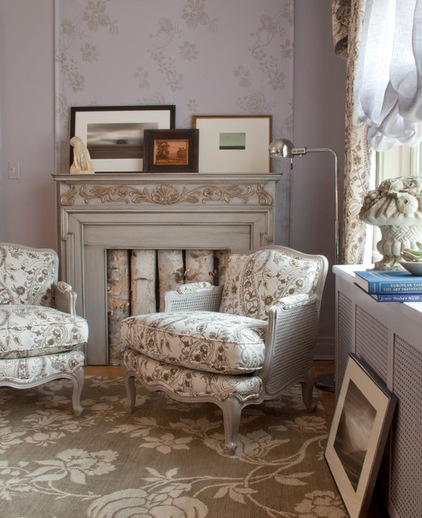
Comfortable seating quickly became all the rage in early-18th-century France. For the first time, furniture was developed with the human body and its comfort in mind. Harmoniously executed, these same forms are still used today and have become true classics.
Two such tours de force are the bergère (shown here) and the fauteuil. The two terms are often confused and (mistakenly) used interchangeably, but they are indeed two different pieces. Here’s the difference, and how you can use these pieces in your home.
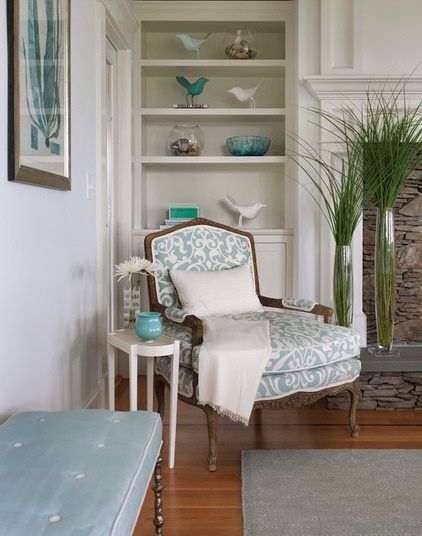
The Fauteuil
A fauteuil (pronounced “foh-TŒ-yuh”) is an upholstered armchair with open sides. Fauteuils typically have an upholstered seat, back and arm pads. The seat cushion can be attached or loose. The wood frame is largely exposed. Cabriole legs, as shown here, are the norm, but some fauteuils can be found with straight legs.
Fauteuils vary greatly in shape. Some have a squarish back with a serpentine top, while others are more curvilinear or even circular.
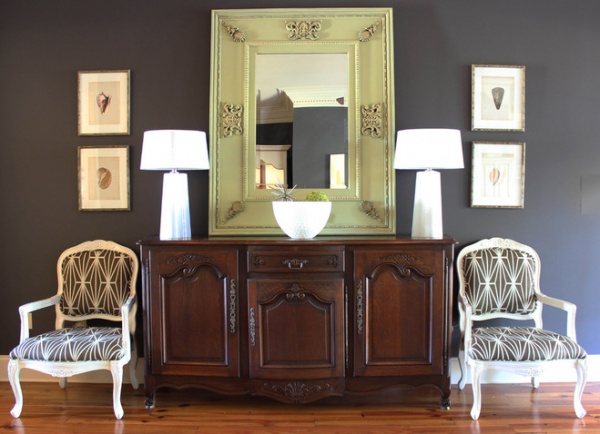
The fauteuil’s design is visually light and airy because of the open arms and legs. The delicate, curvaceous frame helps permeate that sense of lightness too.
While not always the case, the fauteuil can be a bit smaller in scale compared to the bergère.
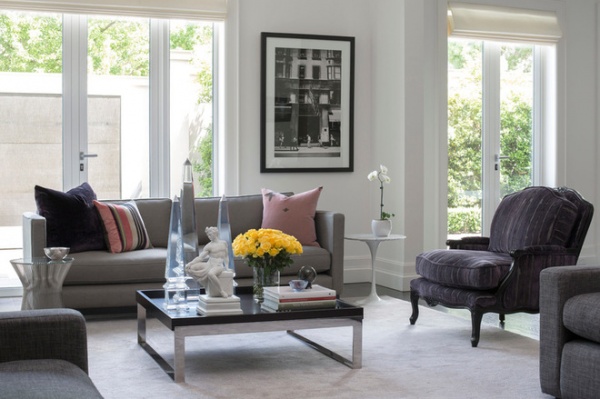
The Bergère
Apparently the “ruin” of Victoire, the bergère is a sumptuous chair design. Unlike the fauteuil, the bergère has closed arms, making it a bit cozier.
Many variations exist, but the seat cushion is usually loose and highly padded. The arm sides are usually upholstered, although sometimes the arms are caned instead, as shown in the first image. The seat backs can be upholstered, but the one here has a loose cushion.
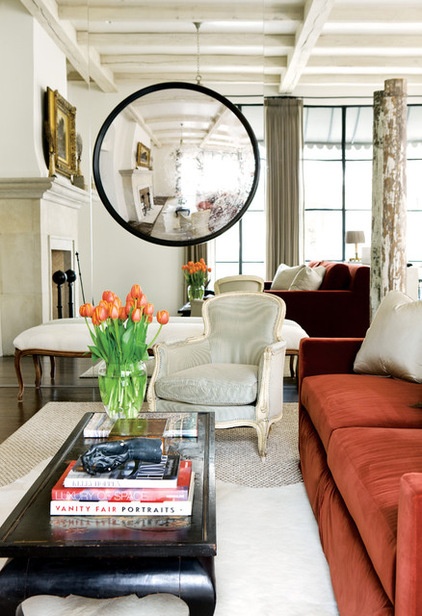
Bergères have some girth to them; they sport a wide frame that’s often fairly low to the ground. Compared to the fauteuil, bergères are often a bit larger in scale.
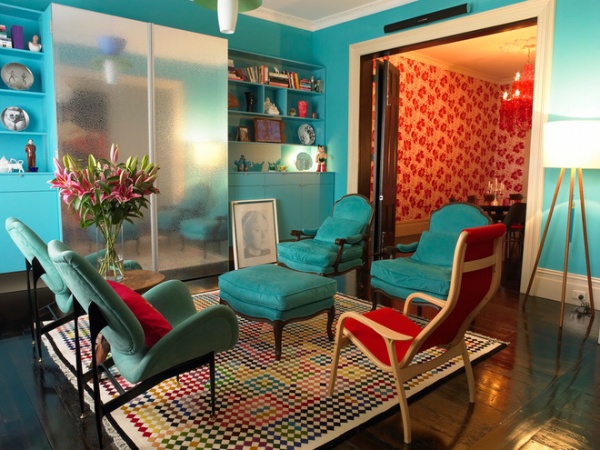
While the primary difference between the two chairs lies in their arms, the pieces share commonalities in their design. As comfort is a primary concern, fauteuils and bergères usually have a slightly reclined seat back, for example, as seen in the two teal fauteuils here.
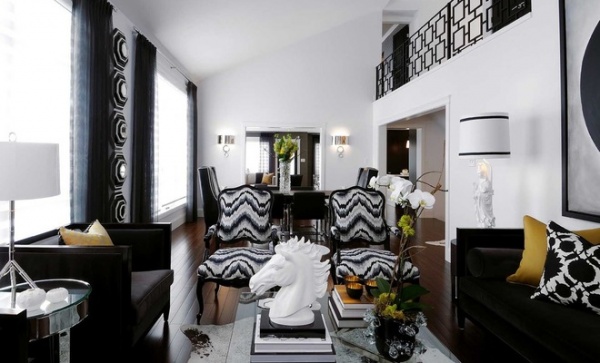
Benefits
Visual connection. Fauteuils and bergères are wonderful additions to living room seating. Not only do they look and feel great, but they break up the blocky heaviness sometimes created by sofa groupings.
Here two fetching fauteuils offer breathing room between the two black sofas and the dining area behind. Had two fully upholstered love seats been used instead of fauteuils, this seating zone would have been clunky and visually impenetrable.
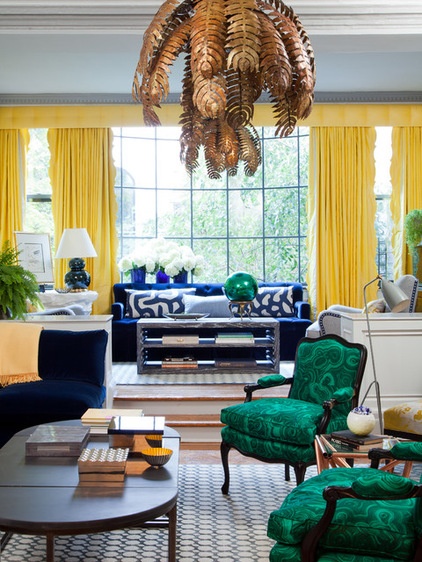
This fauteuil pair upholstered in a malachite print offers walk-around space and a visual connection to the second seating group near the window.
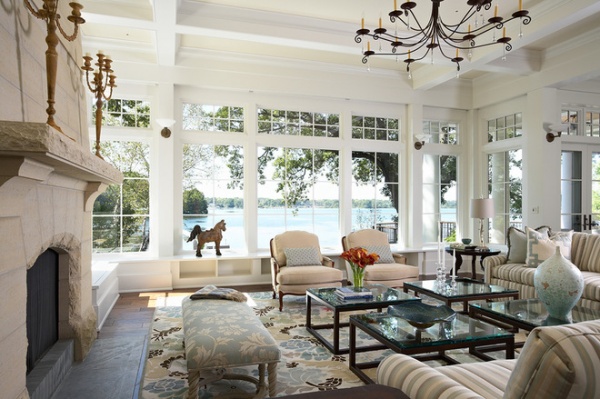
With the lower backs of the bergères, you can place them in front of a feature window without obstructing the beautiful view.
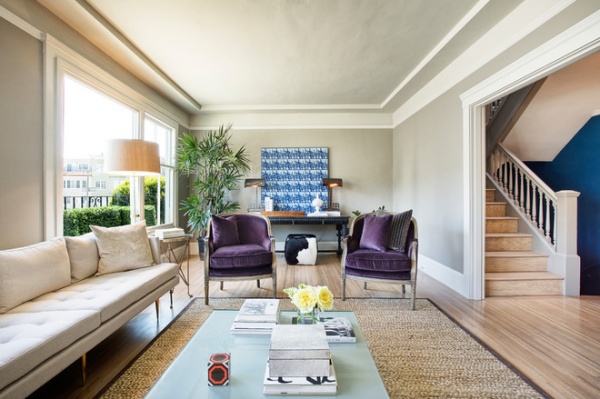
This duo of purple velvet bergères creates a vista for the table and artwork behind it. A sofa here would have blocked off the seating area and created a visual barrier.
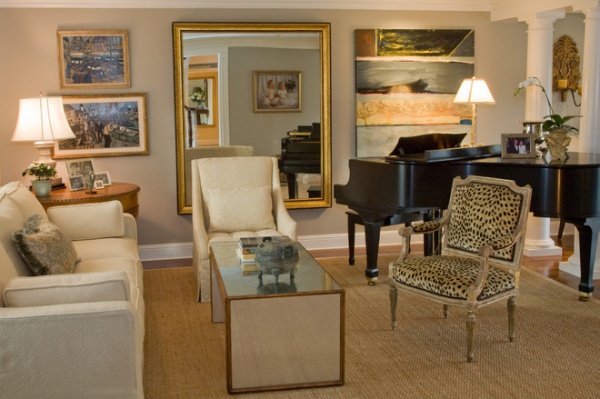
Singles Are Welcome
While chair pairs look fantastic together and offer symmetry, a solitary bergère or fauteuil can also create balance in a seating group.
Here a handsome leopard-print-upholstered fauteuil adds another seat to the compact area. Because of its small size, the fauteuil can be easily moved to be oriented toward the piano when someone is playing. Bergères, on the other hand, are difficult to move on a whim.
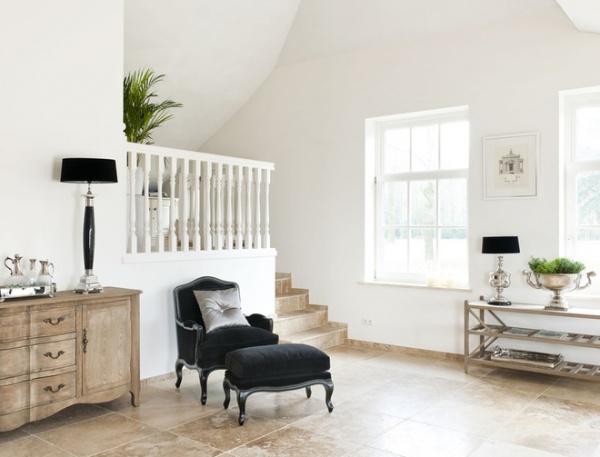
This previously unused space near the stairs was a perfect place for a perch, and this bergère fits the space nicely without feeling like an obvious filler piece.
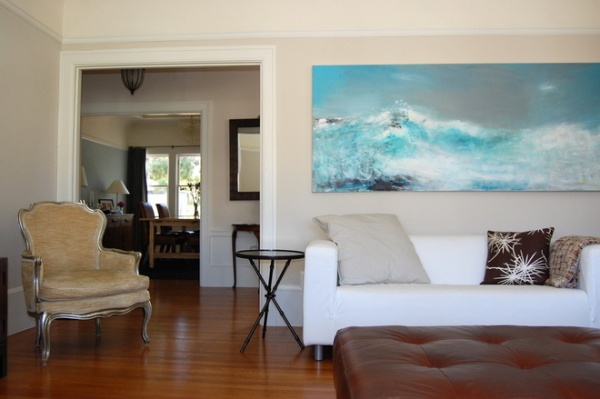
A hefty club chair squeezed into this doorway corner would have been unsightly, but this lighter bergère works. The gilded frame also gives it a daintier appearance.
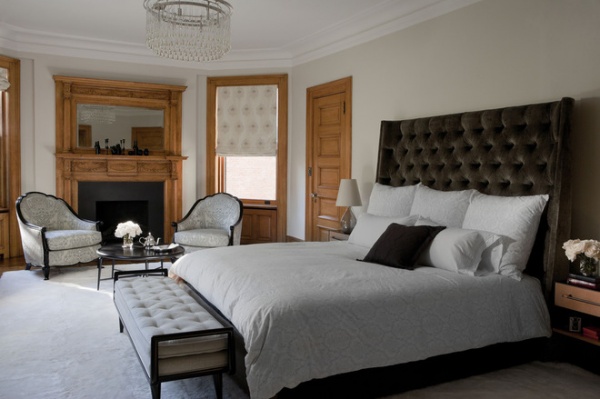
Bedroom Buddies
Oftentimes chairs in the bedroom end up becoming storage spots for piles of clean clothes and such, especially if the chairs aren’t comfortable, and thus infrequently used.
Pleasant to sit in, a bergère makes an ideal spot for reading before bedtime, chatting on the phone or having a cup of coffee when starting the day. It won’t mess up your just-made bed, either.
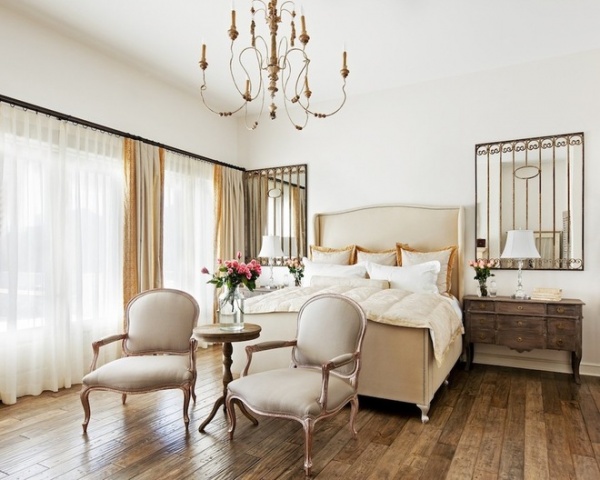
If you don’t have a lot of room, a pair of smaller fauteuils and a petite side table at the foot of the bed will do the trick.
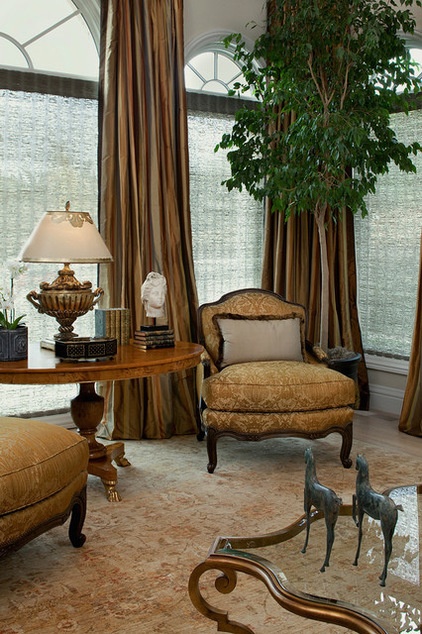
Styles
The aesthetic style a bergère or fauteuil has is completely a function of the fabric selection and how the frame has been treated.
Traditional. Traditional chairs can be upholstered in anything from traditional velvet to brocade, woven wool and even silk.
Leaving the frame stained a natural wood color, as with the one shown here, is a hallmark of traditional style. However, gilded frames and white frames are classic, particularly if they’re a bit distressed.
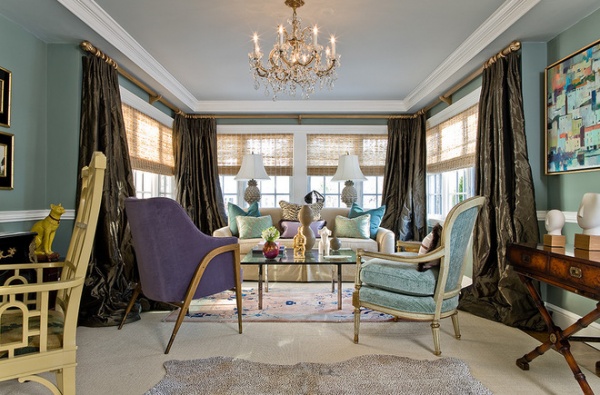
Transitional. Bergères and fauteuils can be chameleon-like and blend in with their surroundings. This fauteuil has a rather traditional, antique-looking white and gilded frame. However, the more contemporary textural fabric allows it to mix effortlessly with its more modern counterparts.
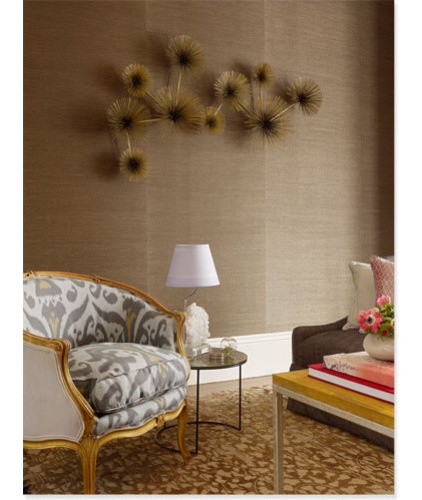
Ikat fabric updates this classically shaped bergère and fuses it with the midcentury interior.
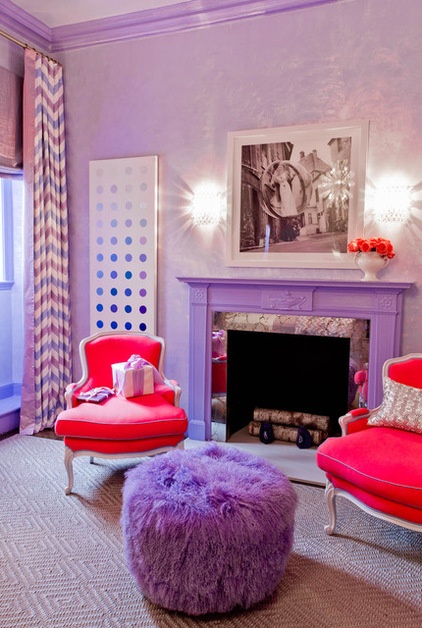
Contemporary. Bright or graphic-patterned fabric and chair frames painted in a solid color generally signify a more contemporary direction. These vivid examples take the look one step further with purple piping to contrast the red fabric. They’re a fun take on a historic icon.
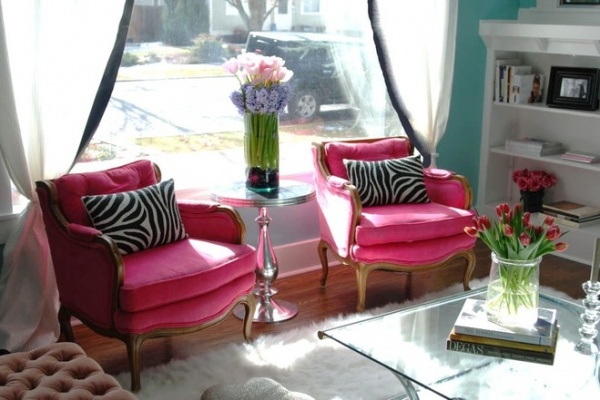
This beautiful pair of bergères is more toned down in fuchsia than the ones above, but the zebra-print accent pillows point to today more than yesterday.
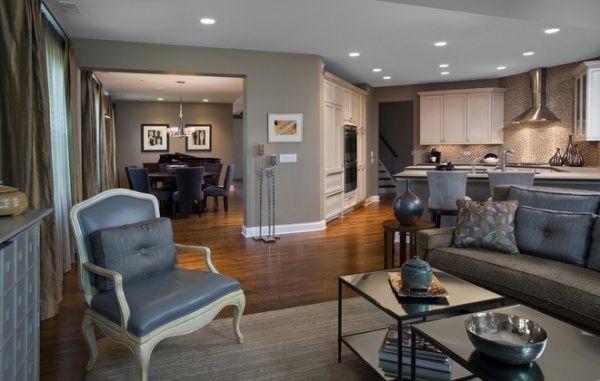
Fredman Design Group notes that this is a client’s antique chair, but upholstering it in gray leather has fused it with the neutral, contemporary furnishings in this open-plan home.
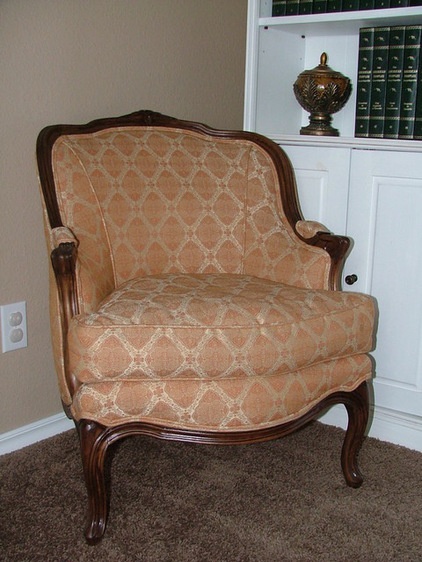
Upholstery Considerations
Heavier upholstery fabrics, like velvets, brocades, wovens (as shown here) and leather are the best selections in terms of durability for normal use. Lightweight silks can be used if a knit backing is added prior to upholstering, but are suggested only on chairs with anticipated light use.
While yardage requirements will vary quite a bit depending on the size of the piece, the pattern repeat and the width of the fabric, ballpark guidelines are:
3 to 4 yards for a fauteuil4 to 5 yards for a bergèreBe sure to have an upholsterer confirm the fabric requirements for your piece prior to purchasing the fabric. Coming up short is a costly mistake!
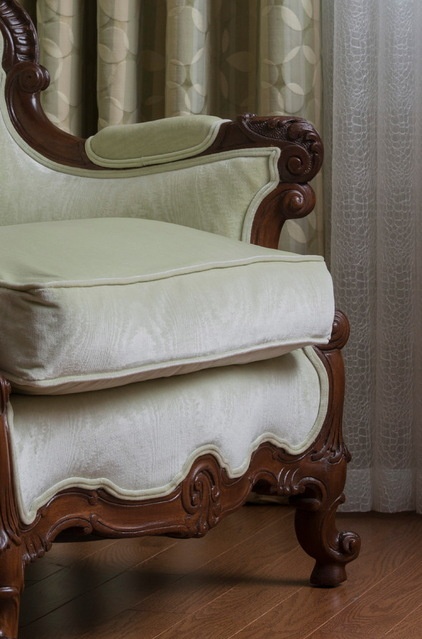
Most bergères and fauteuils are trimmed in a double self-piping, as shown here. Piping hides the upholstery tacks and is very malleable around the curves, humps and bumps of these decorative frames. As an alternative, nailheads or a braided trim could work on less complicated pieces.
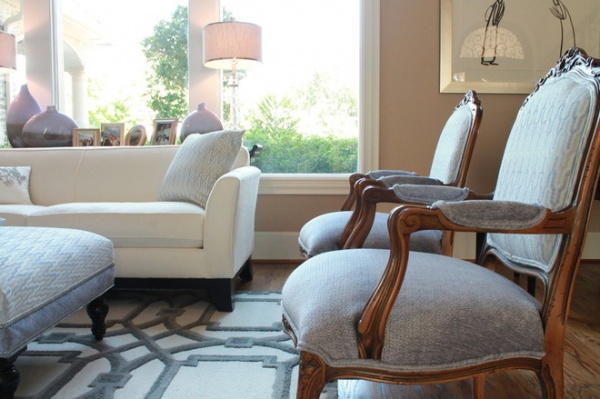
Don’t think you need to upholster the entire chair in the same fabric. This example has one fabric on the seat and arm cushions and another on the seat back.
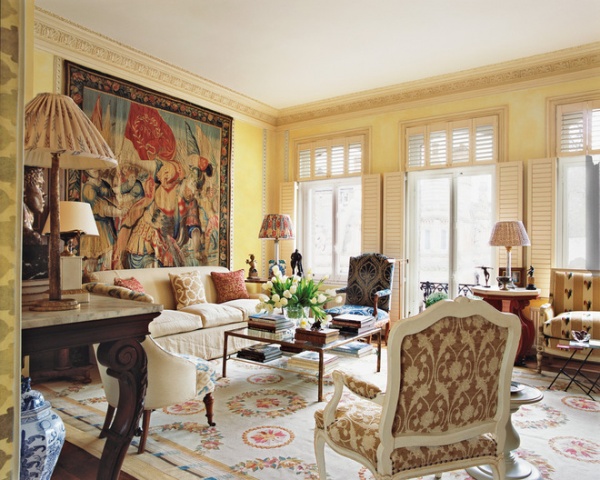
Also keep in mind the exterior back of the chair. While this chair is upholstered in a single fabric, the back is an opportunity to introduce a different fabric.
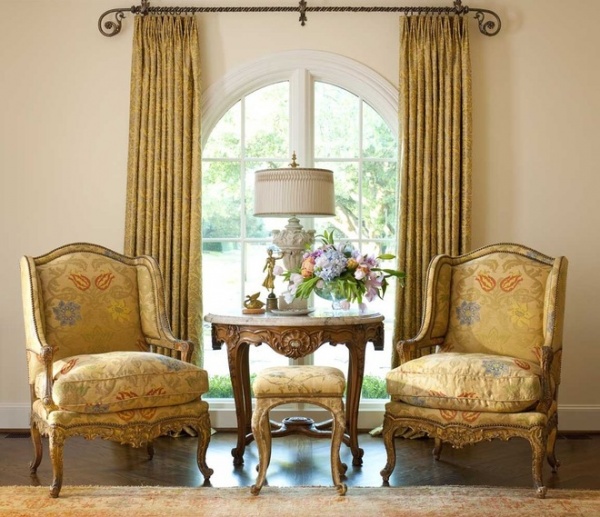
If you will be reupholstering your chair, be sure to have a conversation with your upholsterer about the cushioning. If it needs to be replaced, a down and feather blend (as with the cushion shown here) would be in keeping with the sumptuousness of the chair. Stay away from all-foam cushioning, because it tends to look like a fabric-covered deck of cards and will likely have a commercial feel.
More:
Bulletproof Decorating: Upholstery That Stands Up to Anything
Must-Know Furniture: The Wingback Chair
Related Articles Recommended












